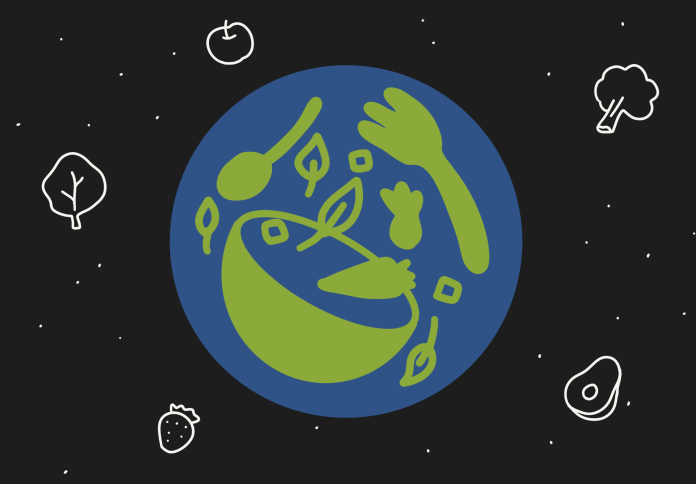Avery Gunderson
Inter/National Beat Reporter
The failure of the United States Environmental Protection Agency (EPA) to strictly regulate pesticides heightens the challenge of securing genuinely healthy food throughout the United States (U.S.) As UC Santa Barbara (UCSB) students travel around the world, the differences in how food agriculture is managed weigh on the mind and make their way to the table.
One example is comparing California and U.S. regulations with Spain’s. In Spain, pesticide regulation is held to European Union standards. The U.S. fails to meet these standards, as the pesticides prohibited in the E.U. “account for more than a quarter of all agricultural pesticide use” in the U.S.
Jessie Moskowitz, a UCSB student who has been studying abroad in Barcelona, Spain, describes what she considers higher quality produce. “I think it has something to do with the lack of use of chemicals to enhance agricultural output or extend the ‘life’ of the produce. Barcelona is also a very large city that has great transportation systems, so it makes sense that it’s very easy to get high-quality produce here.”
Although Spain also struggles with food insecurity, students are guaranteed higher standards for the produce they do have access to, thus lowering their chances of encountering toxic chemicals and improving their ability to eat healthily.
It should be mentioned, however, that food insecurity (defined as a “household-level economic and social condition of limited or uncertain access to adequate food”) compounds the difficulty to eat healthily alongside poorly regulated agriculture.
In the U.S., college students are more likely than the average population to be food insecure. Nearly 57 percent of college students nationwide and 40 percent of UC students experience food insecurity.
Moreover, UCSB students with a low income and a lack of local grocery stores that provide quality goods at reasonable prices are further restricted from healthy eating options. This partially explains the increased likelihood of chronic disease and obesity among food-insecure populations who must often resort to cheaper, yet less healthy, options.
Isla Vista (I.V.) arguably faces an especially challenging conundrum in regard to ensuring food security. Fitting the definition of a food desert — a town with more than 20 percent of the population at or below the poverty line and no access to a large grocery store within a mile — I.V. prompts students to search through university-sponsored food programs or to turn to overpriced fast food and convenience-store snacks. While the Isla Vista Food Co-Op boasts locally sourced produce and snacks, it hardly fits the definition of a large grocery store with ample options for anyone with dietary preferences or restrictions at an affordable price.
As such, it can be extraordinarily difficult for UCSB students to eat a healthy diet. While reforming pesticide regulations will not necessarily solve food insecurity, it can still have a positive impact on the quality of food that is within reach of students.
Behind high rates of chronic illnesses and cancers, in part, is the U.S.’s industrial agriculture complex. Through direct and indirect exposure, pesticides can cause severe health problems from impaired endocrine, to reproductive and immune system dysfunctionality, to death.
The EPA’s regulatory standards lag behind those of Europe, China, India, and Brazil – our top competitors in agriculture – allowing for over 70 agricultural pesticides already banned by the European Union (E.U.). According to the National Library of Medicine, pesticides prohibited in the E.U. “account for more than a quarter of all agricultural pesticide use” in the U.S.
One of the reasons why the U.S. is so behind its global competitors is the framework it uses to regulate pesticide use. It allows toxic pesticide ingredients to remain on the market so long as they are properly labeled, leaving the responsibility to decipher harmful chemicals to the consumer. Although the EPA often welcomes public commentary during major pesticide assessments, in the end, they are usually only removed from the market when the pesticide company itself “voluntarily requests it.”
It is true industrial agriculture has reduced the percentage of the population suffering from acute hunger. However, a lack of sound regulation allows the U.S. industrial agriculture model to trade nutrition intake and general safety for high crop yield.
For example, aldicarb, a pesticide often used on produce ranging from bananas to coffee to fight particular insects, nematodes, and mites, is considered by the World Health Organization to be “extremely hazardous.” Although banned by over 125 countries, aldicarb was up for debate in the U.S. when the EPA approved lifting an aldicarb ban in Florida in 2021. While a successful lawsuit was able to keep the ban in place, this demonstrates the willingness of U.S. agencies to trade off safety for an advantage in the market.
At home, California boasts some of the most comprehensive pesticide reporting procedures. However, the “Review of California’s Risk-Assessment Process for Pesticides” questioned the overall difference in risk assessment between California’s Department of Pesticide Regulation (DPR) and the EPA. They concluded that their risk-assessment requirements and procedures are generally similar.
Even if one has access to what they believe to be healthy, fresh food in a state with purportedly higher standards than the federal level, it is likely their produce still lacks the standards being applied in other countries.











